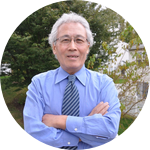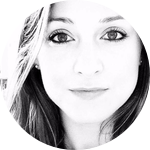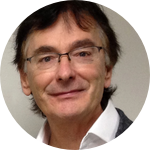About This Project
Pythagoras believed that music could be used “in the place of medicine”* yet, to our knowledge, this important premise has never been tested. This series of blood experiments is designed to discover if music and specific sonic test frequencies have medical properties.
(*According Iamblichus, one of Pythagoras's biographers.)
Ask the Scientists
Join The DiscussionWhat is the context of this research?
Many studies have demonstrated a link between organogenesis and sonic frequencies. 1 Many other studies show the efficacy of therapeutic ultrasound and audible sound in supporting human illness.2
It is reasonable to hypothesize that the underlying mechanisms by which audible sound and ultrasound support plant growth and human illnesses may also influence the longevity of human blood cells, which is the primary focus of our proposed experiment. (Re notes 1 & 2, for references see additional information section.)
What is the significance of this project?
If specific genres of music could be shown to extend the life of blood cells, versus the possible negative effects of noise on blood cell mortality, it may radically alter the listening habits of individuals and the environments in which they immerse themselves. The results may also provide a better understanding of noise exposure in the workplace. In addition, this initial experiment will provide a foundation for future experiments planned to help identify the medical mechanisms that underpin sound therapy, a drug-free modality that is showing potential in the support of many forms of illness.
What are the goals of the project?
To establish if different genres of music, or specific frequencies of pure sound, influence blood cell longevity and to test if exposure to noise negatively affects blood cell mortality.
Whole blood, in vitro, will be exposed to a variety of music genres in addition to a range of pure frequencies and different types of noise. Two incubators will be employed, one with in-built audio transducer, driven by an external sound source, and one without transducer as a control, each containing petrie dishes containing whole blood and reagent.
An automatic cell counter will be used to test blood samples from both incubators at set intervals. The entire experiment will be repeated three times to obtain a pattern of results.
Budget
Equipment and management are essential for project completion. We require a microscope slide heater and temperature controller, two mini incubators, an automatic cell counter and supplies of blood and reagent. Our laboratory already has a Nikon microscope and digital camera that will be used to capture images, both still and video, during progress of the experiment. One of the mini incubators will be custom modified to introduce a transducer, to be driven from a variety of signal sources including music CD's, a frequency generator and a white noise generator.
Endorsed by
 Project Timeline
Project Timeline
Following acquisition of funding, which is anticipated to be before Christmas 2017, we anticipate acquiring items of needed equipment that are not currently in our laboratory during January 2018, following which we expect to set up and run the experiment during February 2018.
Nov 06, 2017
Project Launched
Jan 30, 2018
Weeks 1 to 4, acquisition of equipment
Feb 07, 2018
Week 5, commissioning equipment
Feb 14, 2018
Week 6, run experiment
Feb 21, 2018
Week 7, collate data and write conclusions document
Meet the Team
Affiliates
Team Bio
Emily Abbey & John Stuart Reid of CymaScope.com are collaborating on a number of innovative and scientific projects with humanitarian goals. Together they strive to discover meaningful results to create a positive impact for wellness and the environment.
Emily Abbey
roadmusic.co
In my early career I was part of the BBC Sky at Night astronomy team and have always had a passion for music and travel.
Ten years ago I was diagnosed with a rare suspected blood cancer, which later inspired me to help others.
As music is a universal language, I founded "roadmusic" a consultancy service that supports science, music and travel through content and innovation.
These two aspects of my life--blood and music--led me to ponder whether music affects our blood. I reached out to John Stuart Reid, a well known acoustic-physics researcher, to ask if he knew whether a person's blood would be influenced by music. Coincidentally, he had been pondering an experiment to investigate a similar question, therefore, we began a collaboration.
Apart from my work with roadmusic I am in the process of launching a social enterprise called DEEDSTAR, which aims to reward those who do good-deeds and puts passion, purpose and people before profit. This present research proposed blood experiment will be part of the development of DEEDSTAR.
John Stuart Reid
I am an acoustics engineer, scientist and inventor with a fascination for sound and electronics that goes all the way back to my early childhood, culminating at age fifteen with a thermionic valve radio telescope complete with chimney stack-mounted parabolic antenna with which I was able to listen to the signals of the early satellites and noise from the stars. I studied pure electronics at Northumbria University and went on to work under Professor Joseph Joshua Weiss and Dr Alastair Johnson in the Department of Radiation Chemistry at Newcastle University where I worked with their Febetron beta-ray field-emission device and Electron Spin Resonance machine. My primary interests lie in understanding the mechanisms that underpin sound therapy and developing applications for the CymaScope instrument, which I invented in 2002.
Sayer Ji
I am the founder of Greenmedinfo.com, a reviewer at the International Journal of Human Nutrition and Functional Medicine, Co-founder and CEO of Systome Biomed, Vice Chairman of the Board of the National Health Federation, Steering Committee Member of the Global Non-GMO Foundation.
Additional Information
Many studies have demonstrated a link between aspects of plant growth, for example organogenesis, and sonic frequencies. Here are two examples of many: (Re note 1 from the context introduction) :
https://link.springer.com/article/10.1007/s11240-014-0429-0 https://www.ncbi.nlm.nih.gov/pmc/articles/PMC4772161/
There are also many papers that show the efficacy of therapeutic ultrasound in stimulating cell division in humans. Here are four examples of many. (Re note 2 from the context introduction) :
Dyson, M. Mechanisms involved in therapeutic ultrasound. Physiotherapy 73(3):116-120, 1987.
Dyson, M., Luke, D.A.: Induction of mast cell degranulation in skin by ultrasound, IEEE Trans. Ultrasonics. Ferroelectrics Frequency Control UFFC-33:194, 1986.
Hogan, R.D., Burke, K.M., and Franklin, T.D.: The effect of ultrasound on microvascular hemodynamics in skeletal muscle: effects during ischemia, Microvasc. Res. 23:370, 1982.
Pilla, A.A., Figueiredo, M., Nasser, P., et al: Non-invasive low intensity pulsed ultrasound: a potent accelerator of bone repair, Proceedings of the 36th Annual Meeting, Orthopaedic Research Society, New Orleans, 1990.
Here are four studies regarding the use of audible sound in support of a variety of illnesses:
http://cymatechnologies.com/wo...
http://cymatechnologies.com/wo...
http://www.medsonix.com/assets/unlv_-pilot_study-osteoarthritis.pdf
http://www.medsonix.com/assets/unlv_-pilot_study-peripheral-vascular-disease.pdf
In addition to the above references we have empirical evidence that sound imprints cymatically (visible sound patterns) on the surface membranes of cells, an example of which can be seen in our Aloe Vera plant cell video:
https://www.youtube.com/watch?v=twy101E4jCU
Since most animal cells feature an array of Integral Membrane Proteins it seems likely that such IMP’s will be mechanically stimulated by any incident sound field, which may prove to be an important part of the mechanism whereby cells in a G0 phase (causing illness in a specific bodily system) can be stimulated into the G1 phase, leading to mitosis and wellness. IMP sonic stimulation will be investigated in future planned experiments.
While we have no biological research to back up what is, essentially, an intuitive hunch that the presence of specific sound frequencies may extend the normal lifespan of blood cells, it seems reasonable to hypothesize that the underlying mechanisms by which audible sound and ultrasound support a wide range of illnesses and physical trauma may also extend the life of blood cells. Some of the greatest discoveries in science have been the result of intuitive hunches.
Project Backers
- 284Backers
- 103%Funded
- $15,669Total Donations
- $55.17Average Donation



